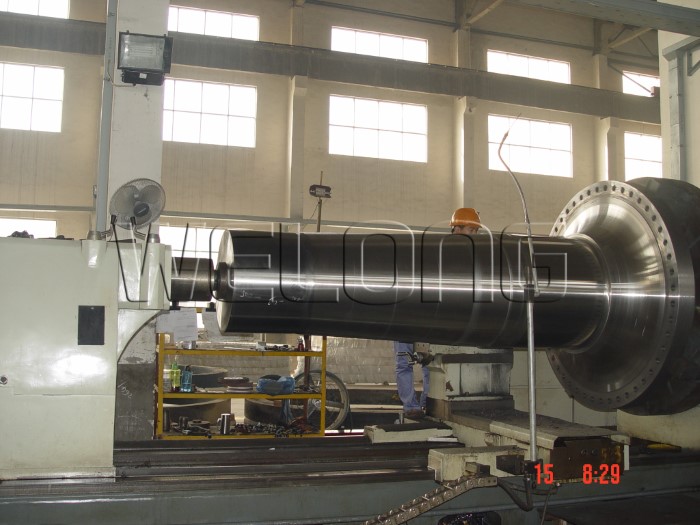As the forging ratio increases, the internal pores are compressed and the as-cast dendrites are broken, resulting in a significant improvement in the longitudinal and transverse mechanical properties of the forging. But when the elongation forging section ratio is greater than 3-4, as the forging section ratio increases, obvious fiber structures are formed, causing a sharp decrease in the plasticity index of transverse mechanical properties, leading to anisotropy of the forging. If the forging section ratio is too small, the forging cannot meet the performance requirements. If it is too large, it increases the forging workload and also causes anisotropy. Therefore, selecting a reasonable forging ratio is an important issue, and the issue of uneven deformation during forging should also be considered.
The forging ratio is usually measured by the degree of deformation during elongation. It refers to the ratio of the length to diameter of the material to be formed, or the ratio of the cross-sectional area of the raw material (or prefabricated billet) before forging to the cross-sectional area of the finished product after forging. The size of the forging ratio affects the mechanical properties of metals and the quality of forgings. Increasing the forging ratio is beneficial for improving the microstructure and properties of metals, but excessive forging ratios are also not beneficial.
The principle of selecting forging ratio is to choose a smaller one as much as possible while ensuring various requirements for forgings. The forging ratio is generally determined according to the following conditions:
- When high-quality carbon structural steel and alloy structural steel are freely forged on a hammer: for shaft type forgings, they are directly forged from steel ingots, and the forging ratio calculated based on the main section should be ≥ 3; The forging ratio calculated based on flanges or other protruding parts should be ≥ 1.75; When using steel billets or rolled materials, the forging ratio calculated based on the main section is ≥ 1.5; The forging ratio calculated based on flanges or other protruding parts should be ≥ 1.3. For ring forgings, the forging ratio should generally be ≥ 3. For disc forgings, they are directly forged from steel ingots, with a upsetting forging ratio of ≥ 3; In other occasions, the upsetting forging ratio should generally be>3, but the final process should be>.
2. High alloy steel billet fabric not only needs to eliminate its structural defects, but also needs to have a more uniform distribution of carbides, so a larger forging ratio must be adopted. The forging ratio of stainless steel can be selected as 4-6, while the forging ratio of high-speed steel needs to be 5-12.
Post time: Sep-22-2023





